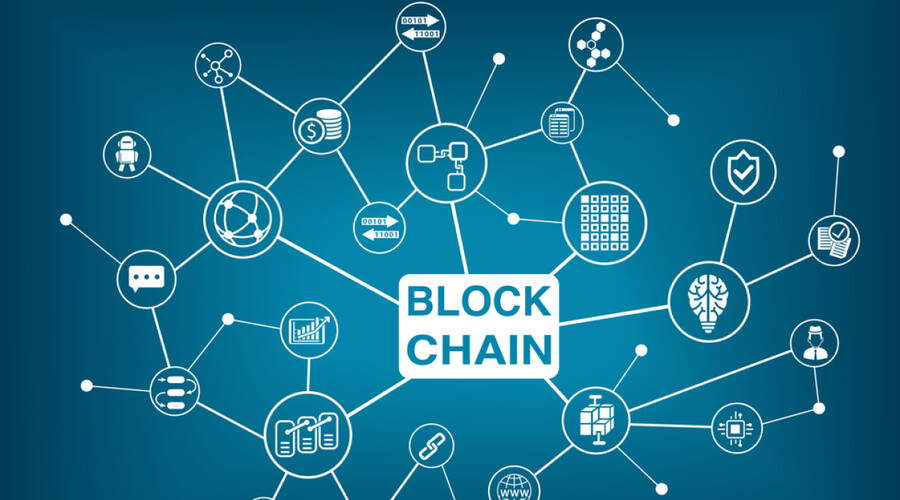Blockchain technology has gained significant attention and recognition across various industries due to its potential to revolutionize traditional systems. One area where blockchain is making a remarkable impact is asset tracking in the Internet of Things (IoT). In this article, we will explore how blockchain-based asset tracking is transforming the IoT landscape and enhancing the efficiency and security of tracking systems.
Introduction to blockchain-based asset tracking
Asset tracking involves monitoring and managing the location and condition of physical assets. In the context of the IoT, where billions of devices are interconnected, efficient asset tracking becomes crucial for organizations to optimize their operations. Traditional asset tracking systems often face challenges such as data inconsistency, lack of transparency, and vulnerability to fraud. Blockchain technology provides a decentralized and immutable ledger that can address these issues effectively.
The importance of asset tracking in the Internet of Things (IoT)
The IoT is a network of interconnected devices that collect and exchange data, enabling seamless communication and automation. Asset tracking plays a vital role in the IoT ecosystem, enabling organizations to monitor and control their assets in real-time. It allows for better inventory management, reduces the risk of theft or loss, improves maintenance processes, and enhances overall operational efficiency.
How blockchain technology can improve asset tracking in IoT

Blockchain technology provides a distributed ledger that records and verifies transactions across a network of computers. By leveraging the decentralized nature of blockchain, asset tracking in the IoT can be greatly improved. Blockchain ensures data integrity, transparency, and immutability, allowing stakeholders to have a single source of truth regarding asset information. With blockchain, assets can be tracked throughout their lifecycle, providing a reliable and tamper-proof record of their history.
Key features and benefits of blockchain-based asset tracking
Blockchain-based asset tracking offers several key features and benefits. Firstly, it enables real-time visibility into asset locations, condition, and ownership. This information is securely stored and can be accessed by authorized parties, ensuring transparency and accountability. Additionally, blockchain facilitates automated asset verification, reducing manual efforts and improving operational efficiency. It also enables seamless collaboration among multiple stakeholders by providing a shared and trusted platform for asset tracking.
Use cases and applications of blockchain-based asset tracking in IoT
Supply chain management
Blockchain-based asset tracking is particularly valuable in supply chain management. By recording every transaction and movement of goods on the blockchain, stakeholders can have a transparent view of the entire supply chain. This helps in reducing fraud, ensuring the authenticity of products, and improving traceability.
Smart cities and infrastructure
In the context of smart cities and infrastructure, blockchain-based asset tracking can play a significant role. It can be utilized to monitor and manage critical assets such as streetlights, parking spaces, and waste management systems. Blockchain ensures the integrity and accuracy of asset data, enabling efficient maintenance and optimization of resources.
Healthcare and pharmaceuticals
Blockchain-based asset tracking can address the challenges in healthcare and pharmaceutical industries, such as counterfeit drugs and supply chain inefficiencies. By recording the movement of pharmaceutical products on the blockchain, stakeholders can verify the authenticity and integrity of drugs, ensuring patient safety.
Automotive and transportation
In the automotive and transportation sector, blockchain-based asset tracking can enhance vehicle management and logistics. It enables tracking and verification of vehicle history, maintenance records, and ownership details, reducing the risk of fraud and improving overall trust in the industry.
Security and privacy considerations in blockchain-based asset tracking
While blockchain technology offers enhanced security compared to traditional systems, it is essential to consider potential security and privacy risks. Proper authentication mechanisms and access controls must be implemented to ensure only authorized parties can access and update asset information. Privacy concerns related to sharing sensitive data on a blockchain can be addressed through techniques like zero-knowledge proofs or private transactions.
Integration of blockchain with other emerging technologies in asset tracking
Blockchain can be integrated with other emerging technologies to further enhance asset tracking capabilities. For example, combining blockchain with Internet of Things devices and sensors can provide real-time data on asset conditions and environmental parameters. Artificial intelligence and machine learning algorithms can be utilized to analyze the data and derive valuable insights for asset management and predictive maintenance.
Future prospects and potential advancements in blockchain-based asset tracking
As blockchain technology continues to evolve, we can expect further advancements in blockchain-based asset tracking. Interoperability between different blockchain networks, scalability improvements, and the development of industry standards are some areas that will contribute to the wider adoption of blockchain in asset tracking. Moreover, advancements in hardware components and edge computing can enhance the efficiency and real-time capabilities of asset tracking systems.
Challenges in traditional asset tracking systems
- Centralized Databases: Traditional asset tracking systems often rely on centralized databases, which pose challenges in terms of data inconsistencies and reliability. A single point of failure in the database can disrupt the entire tracking system.
- Data Inconsistencies: Due to manual data entry or outdated processes, traditional systems may suffer from data inconsistencies. Inaccurate or incomplete information about asset location, condition, or ownership can lead to errors in tracking and decision-making.
- Lack of Transparency: Traditional systems may lack transparency, making it difficult to trace the history and ownership of assets accurately. Without a clear audit trail, stakeholders may face challenges in verifying asset movements, transfers, or changes in ownership.
- Fraud and Tampering: Traditional asset tracking systems can be vulnerable to fraud and tampering. For example, assets may be misreported, stolen, or tampered with, leading to significant financial losses and compromised asset management.
- Limited Real-time Visibility: Traditional systems often provide limited real-time visibility into asset locations and conditions. This lack of real-time information can result in delays or inefficiencies in asset management processes, leading to reduced operational efficiency.
- Dependency on Manual Processes: Many traditional asset tracking systems heavily rely on manual processes, which are time-consuming and prone to human errors. Manual data entry, paperwork, and manual verification processes can slow down operations and increase the likelihood of mistakes.
- Lack of Interoperability: Traditional systems may lack interoperability with other systems or stakeholders. Incompatibility between different tracking systems can hinder seamless asset management and collaboration between organizations or departments.
- Scalability Challenges: Traditional systems may struggle to handle large volumes of data or scale up to accommodate the increasing number of assets to be tracked. This can lead to performance issues and limited capacity for growth.
- Limited Analytics and Insights: Traditional systems often lack advanced analytics capabilities, making it challenging to derive actionable insights from the collected data. Without comprehensive analytics, organizations may miss out on opportunities for optimization and improvement.
- Security and Privacy Concerns: Traditional asset tracking systems may have security and privacy vulnerabilities. Unauthorized access to the centralized database or data breaches can compromise sensitive asset information and raise privacy concerns.
These challenges highlight the limitations of traditional asset tracking systems and emphasize the need for more robust and secure solutions such as blockchain-based asset tracking in the IoT.
Limited Integration with IoT Devices:
One of the significant challenges faced by traditional asset tracking systems is their limited integration with IoT devices. As the Internet of Things continues to expand, organizations are adopting various IoT devices such as sensors, beacons, and RFID tags to track and monitor assets in real-time. However, traditional systems often lack the necessary infrastructure and capabilities to seamlessly integrate and leverage the vast amounts of data generated by these IoT devices. This limitation prevents organizations from harnessing the full potential of IoT-generated data for more accurate and efficient asset tracking and management.
Complexity in Legacy System Integration:
Many organizations have existing legacy systems that are deeply ingrained in their operations. Integrating traditional asset tracking systems with these legacy systems can be a complex and time-consuming process. Legacy systems often have different data formats, protocols, and standards, making it challenging to establish smooth communication and data sharing between different systems. The complexity of integration can result in data silos and fragmented asset tracking processes, hindering organizations from obtaining a holistic view of their assets and impeding efficient tracking and management.
High Maintenance Costs:
Traditional asset tracking systems can come with high maintenance costs. These costs include the upkeep and maintenance of physical infrastructure, software updates, and frequent manual interventions. Maintaining and managing the hardware, software, and databases can strain an organization’s budget, especially as the system scales to accommodate a larger number of assets. The financial burden of high maintenance costs may limit an organization’s ability to invest in more innovative and advanced tracking solutions that could offer better efficiency, accuracy, and scalability.
Inefficient Asset Utilization:
A challenge often faced by organizations using traditional asset tracking systems is inefficient asset utilization. Without real-time visibility and accurate tracking data, organizations may struggle to optimize the use of their assets. Assets may remain underutilized, leading to additional costs and reduced overall efficiency. For example, a company with a fleet of vehicles may not be aware of idle vehicles or inefficient routing, resulting in wasted resources. By having more precise and real-time tracking information, organizations can make data-driven decisions to enhance asset utilization and maximize operational efficiency.
Lack of Scalability:
Traditional asset tracking systems may encounter scalability challenges as organizations expand their operations and the number of assets to be tracked grows. Traditional systems may not be designed to handle large volumes of data or accommodate a rapidly increasing asset base. As a result, the system may experience performance issues, delays, and limitations in terms of capacity and scalability. This lack of scalability can hinder organizations from effectively tracking and managing their assets, especially in dynamic environments where asset turnover is high or when scaling up operations to meet growing demand.
Dependency on Paper-based Processes:
Some traditional asset tracking systems heavily rely on paper-based processes, such as manual record-keeping or physical documentation. These processes are not only time-consuming but also prone to errors, misplacement, or damage. Paper-based processes introduce inefficiencies and increase the risk of inaccuracies in asset tracking. Furthermore, relying on manual processes inhibits real-time tracking and reporting, making it difficult to have up-to-date information on asset locations, conditions, or movements. Organizations that still rely on paper-based processes face challenges in achieving the level of accuracy, transparency, and efficiency that digital asset tracking solutions can offer.
Conclusion
Blockchain-based asset tracking is revolutionizing the way assets are monitored, managed, and tracked in the Internet of Things. By leveraging the decentralized and transparent nature of blockchain technology, organizations can achieve enhanced efficiency, security, and trust in their asset tracking systems. As the technology continues to mature and integrate with other emerging technologies, we can expect to see widespread adoption and further advancements in blockchain-based asset tracking.






